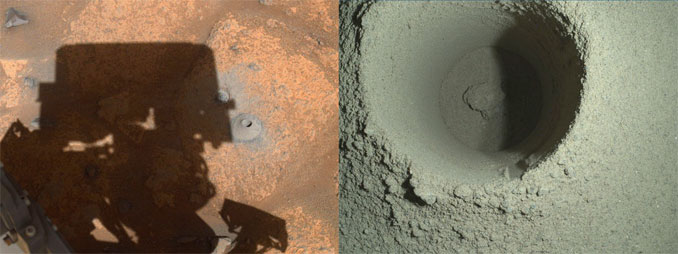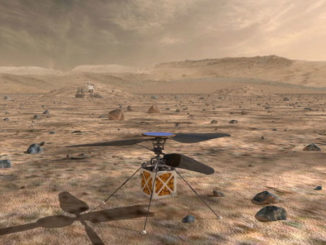
After reviewing photographs and telemetry, engineers believe the Perseverance Mars rover’s first attempt to collect a core sample from the floor of Jezero Crater 6 August failed because the targeted formation could not stand up to drilling, leaving powdered fragments too small to be retained in the sample tube.
“Both the science and engineering teams believe that the uniqueness of this rock and its material properties are the dominant contributor to the difficulty in extracting a core from it,” Louise Jandura, chief engineer of the rover’s sampling and caching system at the Jet Propulsion Laboratory, wrote in an 11 August blog post.
“Therefore, we will head to the next sampling location in South Seitah, the farthest point of this phase of our science campaign. Based on rover and helicopter imaging to date, we will likely encounter sedimentary rocks there that we anticipate will align better with our Earth-based test experience.”
Perseverance landed 18 February in Jezero Crater where a long-vanished lake once shimmered and where traces of microbial life may be preserved in ancient lakebed deposits. The rover is equipped with 43 sample collection tubes that will be filled with core samples, sealed and left on the surface for eventual retrieval and return to Earth for analysis.
Jandura said Perseverance’s complex sample collection mechanism worked flawlessly throughout the initial sample collection attempt. An impact drill on the end of the rover’s robot arm bored a 7-centimetre hole in the targeted rock, a collection tube inside the bit was then transferred into the rover’s adaptive caching assembly, or ACA, as planned. The tube then was photographed, sealed and stored.
But volume measurements and imaging showed the tube was empty.
“The hardware performed as commanded but the rock did not cooperate this time,” Jandura wrote. “Despite this result, science and engineering have progressed. We achieved the first complete autonomous sequence of our sampling system on Mars within the time constraints of a single Sol (martian day).
“This bodes well for the pace of our remaining science campaign. We are looking forward to the next sampling attempt in South Seitah, anticipated in early September.”



